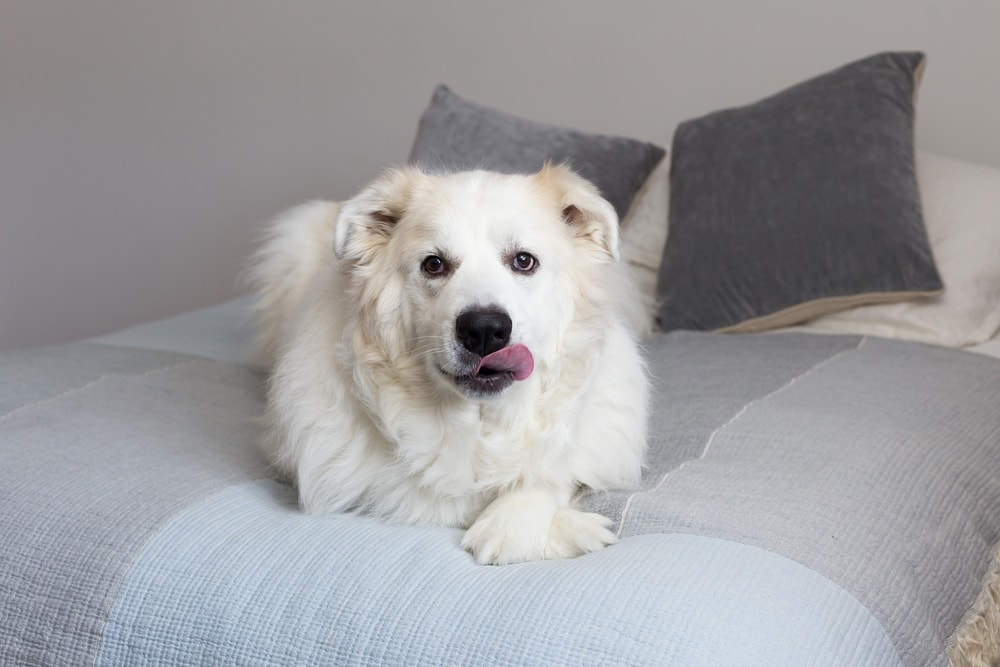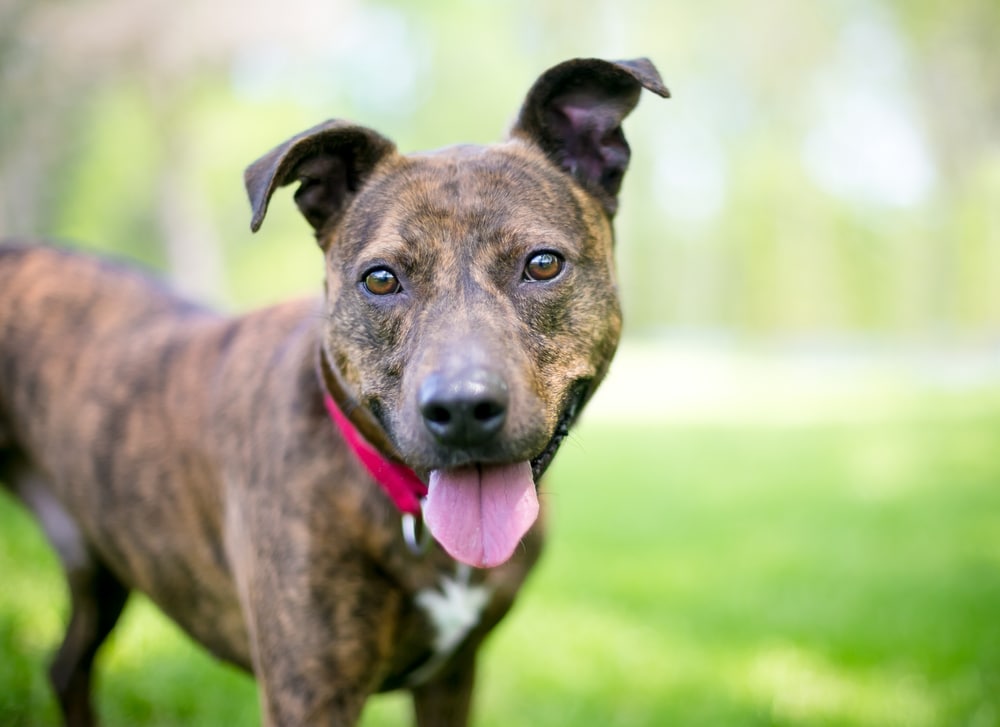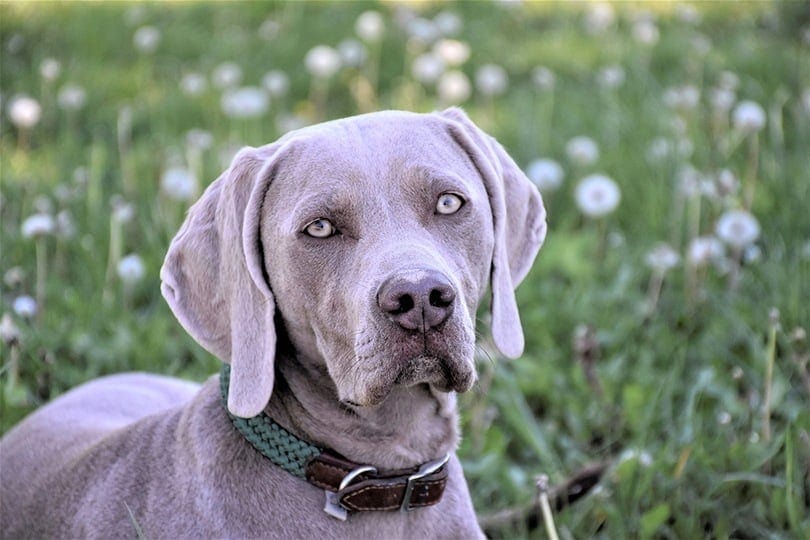4 Amazing Bloodhound Colors Plus Coat Care Tips (With Pictures)

Updated on

Click to Skip Ahead
Bloodhounds are a dog breed known for their distinctive physical features and unwavering determination. With their droopy ears and wrinkled skin, they certainly capture the attention and hearts of many dog lovers everywhere. However, their coat colors are equally captivating.
It may come as a surprise to some that Bloodhounds come in a variety of different colors, which can vary depending on how they’re bred. From the classic black and tan coloration to more unique shades like liver or red, Bloodhounds boast a diverse range of coat colors that only adds to their appeal. Let’s discuss a bit more about the coats and colorations of Bloodhounds.
The 4 Bloodhound Colors
1. Black & Tan Bi-Color
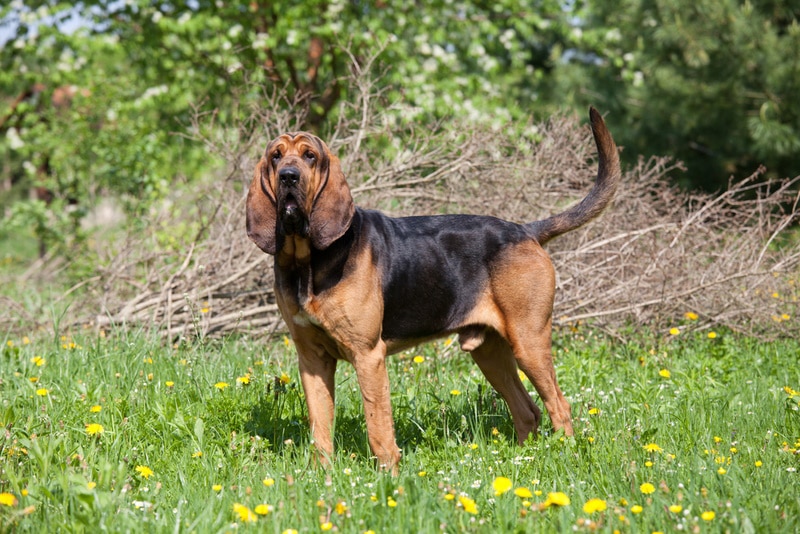
One of the most common colors seen in Bloodhounds is the black and tan mix. This color combination features a black coat with tan markings on the face, chest, and legs. The black and tan Bloodhound is considered to be the classic coloration for this breed, and it is often what people picture when they think of a Bloodhound – thanks to their roles in television. This color combination not only gives the Bloodhound a regal appearance but also helps to highlight the unique features of their face, such as their droopy ears and soulful eyes.
2. Liver
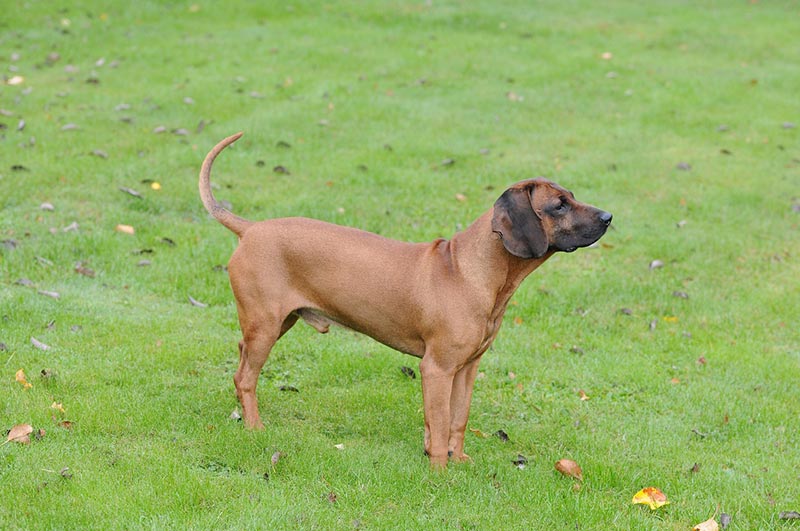
In addition to black and tan, Bloodhounds can also come in liver and red colors. Liver bloodhounds have a deep brown coat that can range from light to dark shades. This unique coloration is caused by a recessive gene that dilutes the black pigment in the coat. Liver bloodhounds are less common than black and tan Bloodhounds but are still highly sought after by breed enthusiasts. Their rich brown color gives them a distinct and even elegant look.
3. Red

Red bloodhounds are another beautiful color variation that can be seen in this breed. These dogs have a coat that ranges from a deep mahogany red to a lighter red shade. The red coloration is actually caused by a different recessive gene that dilutes the black pigment and brings out the red tones in the coat. But red Bloodhounds are known for their striking appearance and are often considered to be quite rare.
4. Black & Liver
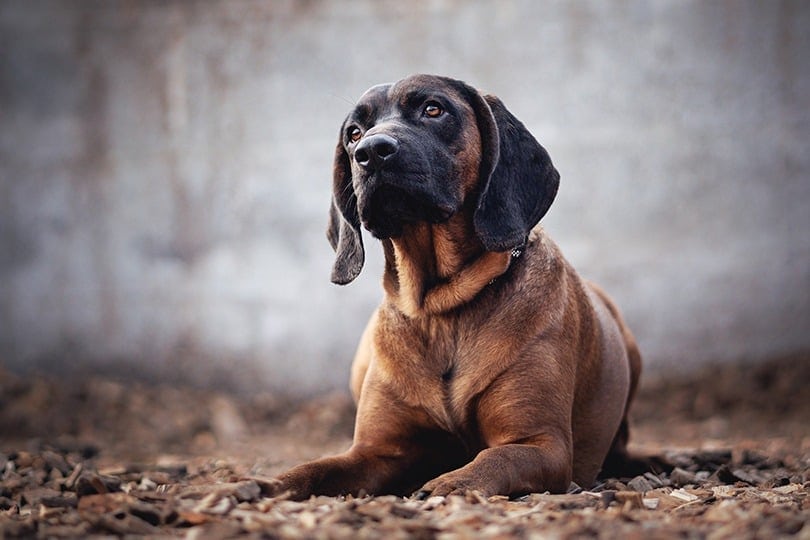
While the three colors above are the most common variations seen in Bloodhounds, there are also other colors that can occur. Some Bloodhounds may have a combination of black and liver, known as bi-color, while others may have a predominantly white coat with patches of color, known as parti-color. These gorgeous variations in color only add to the overall diversity and beauty of the bloodhound breed.
The Genetics Behind Bloodhound Colors
The mesmerizing colors and patterns of Bloodhounds are not simply a result of chance but are determined by genetics. The genes responsible for coat color in Bloodhounds are complex and multifaceted, involving multiple chromosomes and other factors. The main genes that influence coat color in Bloodhounds are the agouti gene, which controls the distribution of color on the dog’s body, and the eumelanin gene, which determines the intensity of color.
Other genes, such as the extension and dilution genes, play a role in modifying and diluting the base color. Understanding the intricate genetic makeup of Bloodhounds can help breeders predict the colors and patterns that will be present in a litter, enabling them to selectively breed for specific traits. However, it’s important to note that genetics can sometimes be unpredictable, and unexpected color variations can occur.
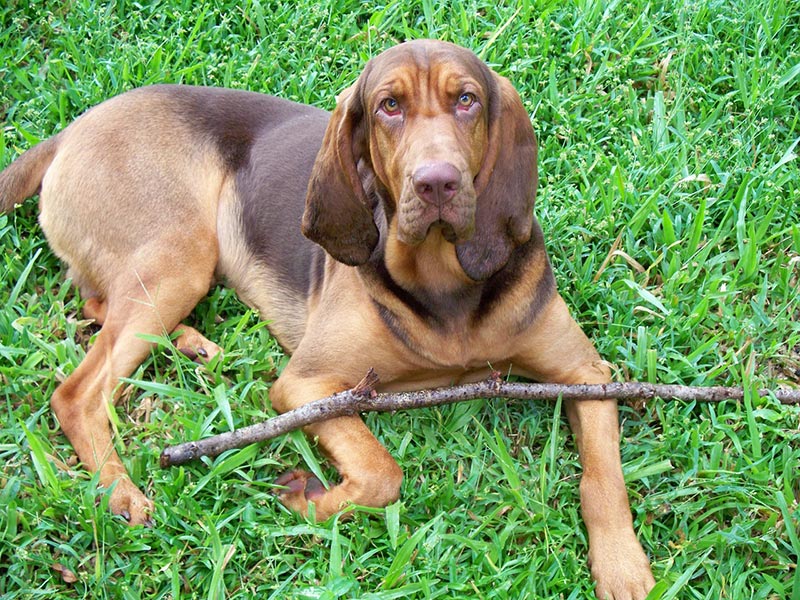
More On the Coat & Skin of a Bloodhound
The coat and skin of a Bloodhound are unique and play a crucial role in their abilities as scent-tracking dogs. Bloodhounds have a short, dense coat that is weather-resistant and protects them from the elements. The texture of their coat is smooth and soft to the touch, which adds to their appeal as a breed.
Bloodhounds have loose, wrinkled skin that hangs over their body. These wrinkles, particularly around their face and neck, serve a practical purpose. They help to trap scent particles in the air, directing them towards the Bloodhound’s highly sensitive nose. This feature is what makes the Bloodhound one of the most proficient scent-tracking dogs in the world.
The loose skin also gives them a distinctive appearance that sets them apart from other breeds. The wrinkles on a Bloodhound’s face and neck require special attention. These areas need to be cleaned regularly to prevent dirt and moisture from getting trapped in the folds of the skin, which can lead to infections. Using a damp cloth or specialized dog wipes can help to keep these areas clean and free from any debris. It’s also crucial to dry the wrinkles thoroughly after cleaning to avoid any moisture-related issues.
The 5 Must-Have Grooming Tools for a Bloodhound
Before you embark on your grooming routine, it’s important to have the right tools at hand. Here are some essential grooming tools you’ll need for your Bloodhound:
1. Slicker Brush
This type of brush is designed to effectively remove loose hair, tangles, and mats from your dog’s coat. Regular brushing with a slicker brush is essential for maintaining your Bloodhound’s coat’s cleanliness and preventing any discomfort caused by tangled fur. The fine bristles can reach deep into the coat, removing any trapped dirt or debris, and leaving your Bloodhound looking clean and well-groomed. Just make sure to use gentle strokes when brushing to avoid causing any discomfort or irritation to your pup’s skin.

2. Pin Brush
The pin brush is designed with long, flexible bristles that effectively remove any remaining loose hair or debris from your dog’s coat. This helps to prevent matting and tangling, keeping their fur clean and free from knots. Also, the pin brush helps to distribute the natural oils produced by your Bloodhound’s skin throughout their coat. This not only adds shine to their fur but also helps to keep it moisturized and healthy.
3. Wide Tooth Comb
A comb with wide teeth is perfect for working through your Bloodhound’s long fur, ensuring it’s free from tangles and mats. It’s particularly useful in areas with longer hair, such as the ears and tail. The long fur of a Bloodhound can easily become matted if not properly maintained. A comb with wide teeth allows you to work through the fur, ensuring it remains free from mats (which is common after the dog gets wet). This type of comb is particularly useful in areas with longer hair, such as the ears and tail, where mats are more prone to form.
4. Nail Clippers
Bloodhounds have sturdy nails that can grow long if not trimmed regularly. Invest in a pair of nail clippers designed specifically for dogs to keep their nails at a comfortable length. You’ll need to use caution when using these clippers, as not to cut the nail down too low to the blood vessels. You can also use sanders.
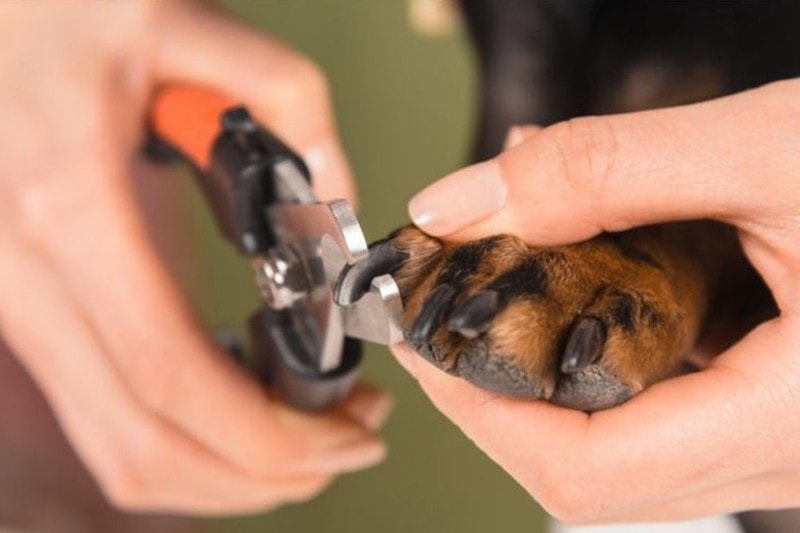
5. Ear Cleaning Solution
Regular ear cleaning really isn’t an option for these dogs, and it’s best to keep a solution on deck. The long, floppy nature of their ears can trap dirt, moisture, and wax, creating the perfect environment for bacteria and yeast to thrive. To prevent any potential issues, it’s important to regularly clean your Bloodhound’s ears with a gentle ear cleaning solution. This solution helps to remove any dirt or wax that may have accumulated in the ear canal, reducing the risk of infection.
The 5 Bathing & Drying Tips for Bloodhounds
Regular bathing is an essential part of your Bloodhound’s grooming routine. However, it’s important to approach it with care to avoid drying out their skin or causing any skin irritations.
1. Know the Proper Bathing Frequency
Bloodhounds have a natural oil production that helps keep their coat healthy. Therefore, it’s best to bathe them only when necessary; typically this will be about every 6–8 weeks. Over-bathing can strip away their natural oils and cause dry skin. But yes, if the dogs are smelly, give them a bath.
2. Choosing the Right Shampoo
Use a gentle, hypoallergenic shampoo specifically formulated for dogs. Avoid shampoos with harsh chemicals or fragrances, as these can irritate your Bloodhound’s sensitive skin. Consult your veterinarian for recommendations based on your Bloodhound’s specific needs.

3. Brush Before Bathing
Before getting your Bloodhound wet, brush their coat thoroughly to remove any loose hair or tangles. This will prevent mats from forming and make the bathing process more effective.
4. Use Warm Water and Gentle Massage
Use lukewarm water to wet your Bloodhound’s coat, ensuring it’s thoroughly soaked. Gently massage the shampoo into their fur, paying close attention to areas prone to odors or dirt buildup, such as the neck and underarms. Rinse the shampoo thoroughly to prevent any residue.
5. Dry Them Thoroughly
Again, Bloodhounds have deep folds and wrinkles that can trap moisture, leading to skin irritations or infections. After bathing, gently pat their coat dry with a towel, paying extra attention to the wrinkles. Avoid vigorous rubbing, as it can cause friction and irritation. Use a blow dryer on the lowest heat setting to ensure their coat is completely dry, especially in hard-to-reach areas.
Dealing With Shedding and Managing Allergies
Bloodhounds are moderate shedders, which means they shed their fur regularly, especially during seasonal changes. Additionally, like any breed, Bloodhounds can be prone to allergies. Here are some tips for dealing with shedding and managing allergies in your Bloodhound:
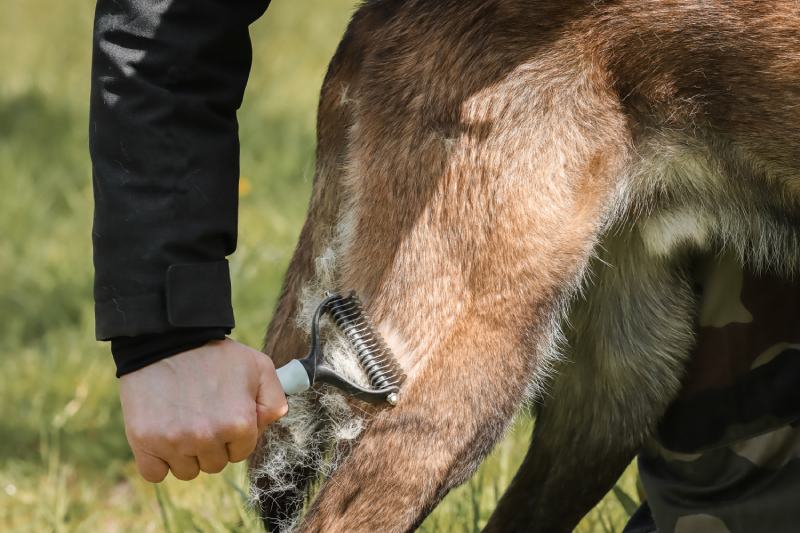
Regular Brushing
As mentioned earlier, regular brushing is essential to remove loose hair and minimize shedding. Brush your Bloodhound at least once a week, using a slicker brush followed by a pin brush. This helps to remove the loose hair before it ends up on your furniture or clothing.
Supplements for Healthy Skin and Coat
One supplement that has proven to be beneficial is Omega-3 fatty acids. These essential fatty acids not only help reduce shedding but also improve the overall condition of your Bloodhound’s skin and coat. By incorporating Omega-3 fatty acids into their diet, you can see a noticeable difference in the health and appearance of their skin and coat.
Allergy Management
If your Bloodhound exhibits signs of allergies, such as excessive itching, redness, or skin irritations, consult your veterinarian for proper diagnosis and treatment. Allergies can be caused by various factors, including food, environmental allergens, or flea bites. Your vet can recommend appropriate measures, such as medications (and over-the-counter aides), lifestyle changes, and supplements.
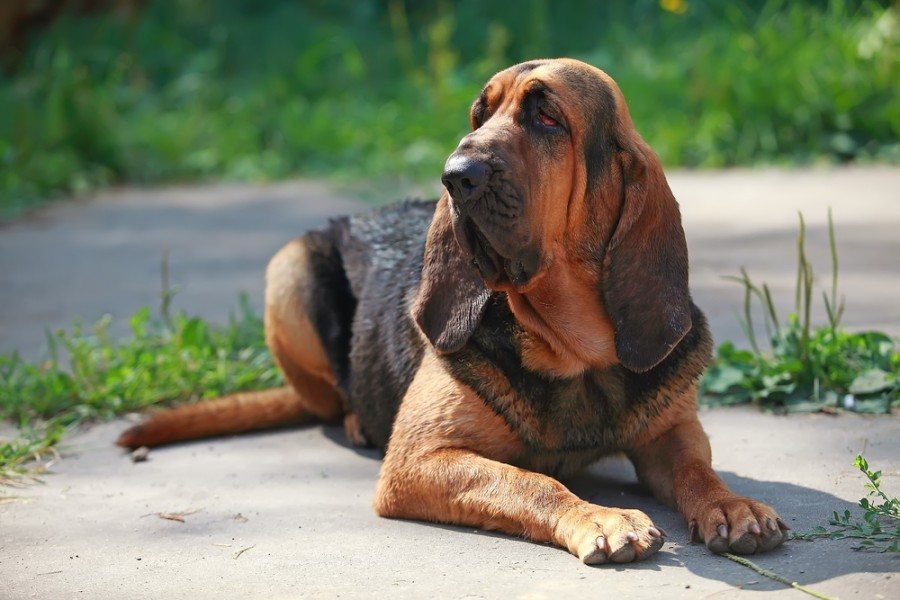
Keeping a Bloodhound’s Paws Clean and Healthy
A Bloodhound’s paws are exposed to various elements, including dirt, mud, and potentially harmful substances. Regular paw care is essential to keep them clean and healthy.
Inspect and Clean Regularly
Regularly inspecting your Bloodhound’s paws is essential for maintaining their overall health and well-being. Look out for any signs of cuts, scrapes, or foreign objects that may be lodged between their paw pads. These can lead to discomfort and potential infections if left untreated. To ensure cleanliness, gently clean their paws using a damp cloth or specialized paw wipes. This will help remove any dirt or debris that may have accumulated during walks or outdoor play.
Trim Hair Around Their Paws
Bloodhounds often have excessive hair growth around their paw pads, which can lead to the trapping of dirt and moisture. This can not only be really uncomfortable for the dog but also increase the risk of infections and other foot-related issues. To prevent this, it’s important to regularly trim the hair around the paws using grooming scissors or clippers. However, caution must be exercised to ensure that the hair is not cut too close to the skin, as this can cause discomfort and potential injury.
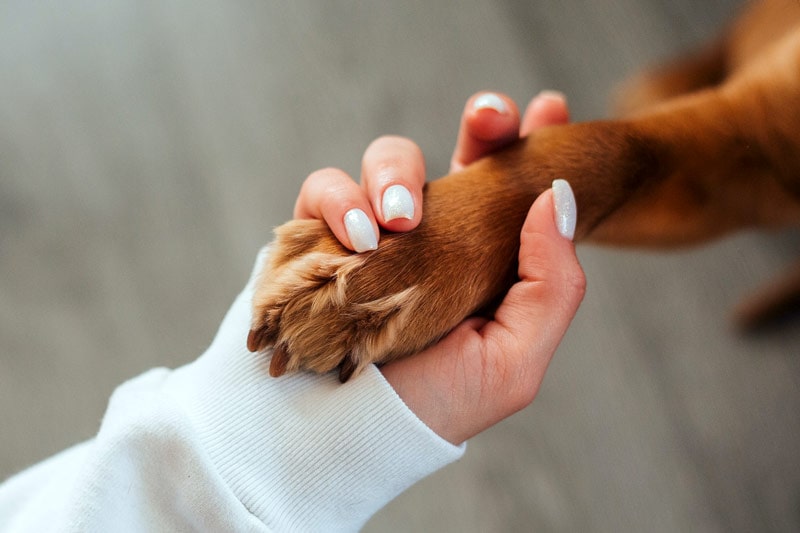
FAQs About Bloodhounds
Why does my Bloodhound drool so much?
Bloodhounds are actually known for their excessive drooling. This excessive drooling is a natural characteristic of the breed and is caused by several factors. Bloodhounds have loose skin around their lips and jowls, which allows them to hold and carry scent more effectively. However, this loose skin also leads to an increased production of saliva, resulting in excessive drooling. Also, Bloodhounds have large mouths and heavy jowls, which further contribute to the amount of drool they produce. While this may be a bit messy and inconvenient for owners, it’s important to understand that excessive drooling is simply a normal and unavoidable trait for Bloodhounds… unfortunately.
Are Bloodhounds hypoallergenic dogs?
No. Bloodhounds aren’t considered hypoallergenic dogs. These dogs have a relatively short coat that sheds quite a bit. This shedding can cause allergies and trigger symptoms such as sneezing, itching, and watery eyes in those who are allergic to dogs. Despite their droopy ears and wrinkled skin, Bloodhounds aren’t hypoallergenic and may not be suitable for individuals with allergies. It can be helpful for people with allergies to spend time with a Bloodhound before bringing one into their home to see if they have any adverse reactions.
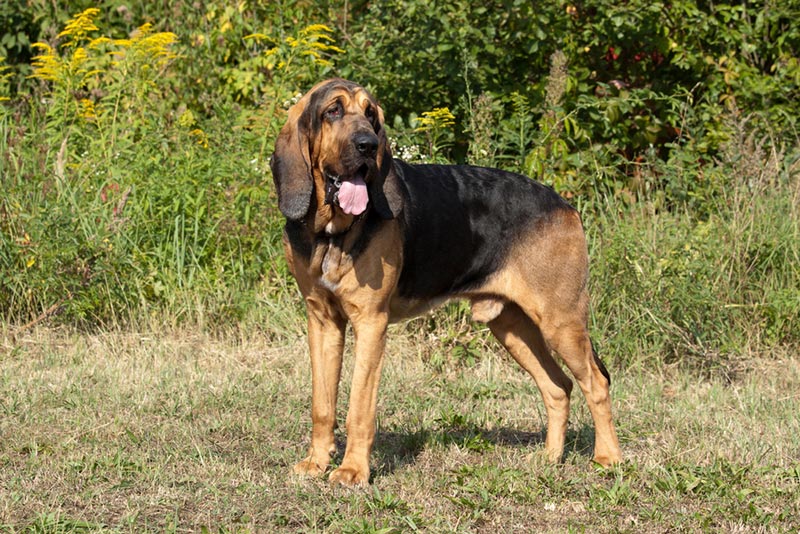
Wrapping Things Up
So, as you can see, Bloodhounds come in a variety of different colors, each with its own sort of unique charm. From the classic black and tan to the rarer liver and red variations, Bloodhounds are a breed that offers something for everyone. The diversity in color adds to their overall appeal and makes them a popular choice among dog lovers around the world.
Featured Image Credit: Glikiri, Shutterstock


